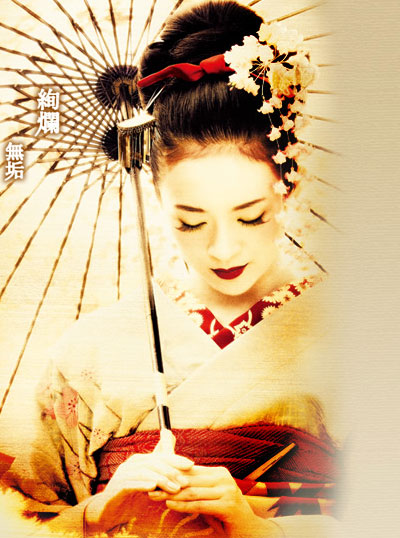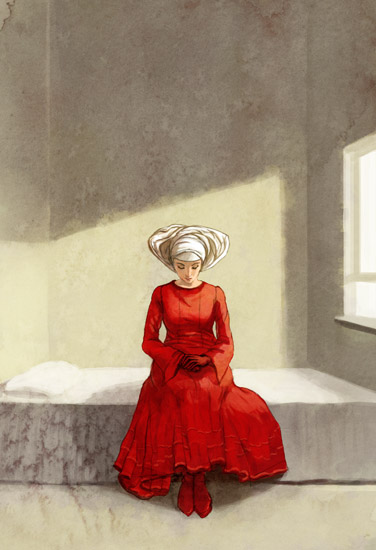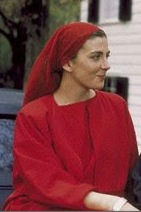Costumes and Characters
Hillary Cleveland
How do the costumes (clothes) of a character affect the way we think about a character? I have noticed that while reading novels I create very concrete costumes for all of the characters based partly on what is described in the novel by the author, but also based on the personality and my opinion of the character and by what is going on in the novel. While watching films, both of representations of books and stand-alone movies, I find that I critique the costumes.I have also found that the costumes play a huge role in how I not only feel about a certain character but also how I feel about the entire film. For example, the costumes in Memoirs of a Geisha, which were fantastic, made me enjoy and understand the characters on a new level. In the case of Memoirs of a Geisha not only are the costumes beautiful but they are part of the story. The costumes embody the world they are depicting, the world of the Geisha; constricted, managed, yet outwardly beautiful. The art of putting on a kimono is long and complex, much like the art of being a Geisha. Later on in the movie, during the war, we see the main character who had once been a Geisha, in peasant clothes working in a river dying silk. I connected with her. I felt a real sense of loss of an important part of a life and culture. The costumes portrayed another level of the movie for me
I see a similar importance in the costumes of the Handmaid’s Tale, especially Offred’s character. While reading the novel I saw her in an extremely baggy, heavy red dress that did not show her figure. The dress went completely to the floor, and her shoes were not visible. This is what I saw her wearing in the beginning of the novel. This costume that Offred was made to wear was bland and simple in my mind while I did not know much about her. Then more detail was added to the costume as the character became fleshed out. Offred’s “wings” have also had many incarnations. When I thought of Offred as a weak person being shepherded around in the beginning, they were quite large and obscured most of her face like an exaggerated habit. As she became a more developed character and I saw her as stronger, the wings became smaller, less obtrusive. The costumes did not necessarily make me connect with these characters in particular, however the costumes were connected with how I felt about the character. I respected the character of Offred in the novel. The outfit she was made to wear felt very disconnected from her past, as I felt it should. All of the costumes in the novel helped me to set the novel in a time that is not our own, which I felt was important part of the story.
In the 1990 movie version of The Handmaid’s Tale, I felt the costumes took away that part of the story that was in the novel. By making the handmaids wear dresses that didn’t cover their feet and were less baggy and heavy then what I imagined in the novel, the handmaids were less separated from the world we live in today and less separated from their own past. The loss of the white head covering I also felt brought them too close to the present. The simple red, sheer cloth over their hair is too recognizable. Part of what I find interesting about the novel is that there are only some things that remind Offred of the past (such as the TV), but if the clothes they are all wearing (the Wives and Marthas included) then you lose that uniqueness of the TV being a connection to their past. I felt less like these women were weaker then the ones in the novel. I did not like the character of Offred nearly as much as I did in the novel. Partly she was so different in the movie because the producers played up different parts then were in the novel, however the costumes of everyone in the movie were just too similar to what people wore in the 1990s for me to get past it. A good costume will enhance, but not inhibit the telling of a story. In Memoirs of a Geisha the beautiful kimonos are part of the art of the film, but they also do not over run the story. In the movie of The Handmaid’s Tale I felt the costumes took away from the story of these women.
This image that I drew is “The Two Offreds”; the one from the novel and the one from the film. There is meant to be a strength in the left novel side that is not there in the right veiled movie side. I also wanted to depict some of the differenced in the actual costumes. The All Seeing Eye is behind her, also split between the two types. Costumes and clothes are the technology of representation that we often forget about because they are so ubiquitous, however they are extremely important in the representation of the self, whether that be gendered or not. I really think that something as universal and as diverse as clothing can have a huge impact on us.
Images:
Still based on Memoirs of a Geisha, Columbia Pictures and DreamWork Pictures, 2005
McGuire, Erin “Handmaid’s Tale”, December 2008
Film Still, The Handmaid’s Tale, Metro Goldwyn Mayer, 1990
Cleveland, Hillary “The two Offreds”, April 2009
Comments are closed.





It was your earlier venture into the visual representation of “stuff from your head” that inspired me to ask all of you to make this set of papers more visual; thank you so much for taking up the challenge! The link you make here, from the costumes in Memoirs of a Geisha to those in The Handmaid’s Tale, had also been made, earlier, and visually, by JS, on our course blog–that would have made a nice “quote” for your paper, too.
The real question that your series of images and commentaries raises for me has to do with the relation between the two qualities—“universal and diverse”—which you evoke in your final line. Diverse costumes will certainly have diverse effects on us, as diverse people. For example, your sense that a woman’s strength is lost when she is veiled is not shared by many women who chose veiling; see “Female Veiling in Iran” for a taste of some of this. I would say that even your own reaction gets complicated (and changes?) in the course of this paper; at first you say that, as Offred became a stronger character, you imagined her wings becoming “smaller, less obtrusive.” Later, however, you complain that the costumes in the film, which are more recognizable, “closer to the present,” than those in the novel, make the characters appear “weaker.”
That gets me, I guess, to a more general question about the way in which you’ve structured your paper: around your own affective experiences with films and texts. How to generalize from your own experiences to those of others?